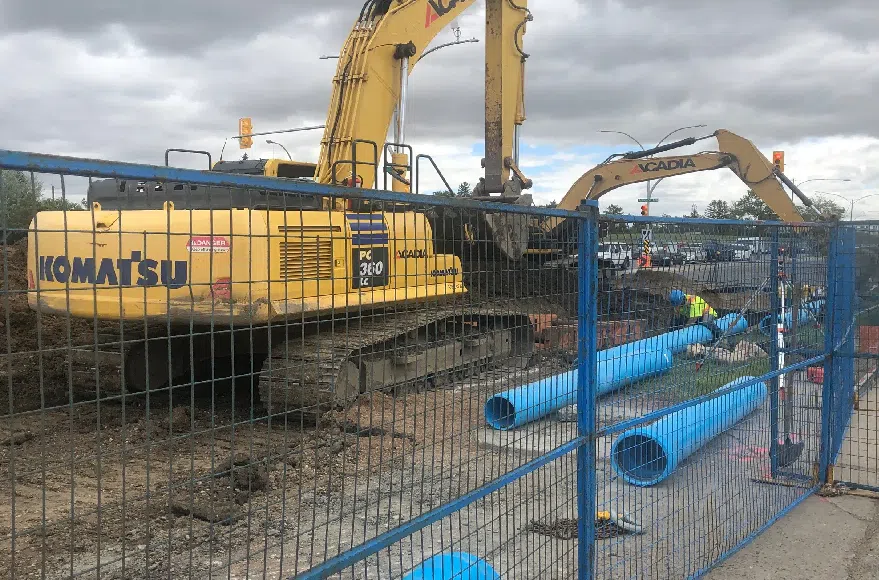Would the City of Saskatoon be prepared for a major water main break — like the kind that happened in Calgary on June 5, and in Montreal on August 16th.
A new report to councillors Tuesday outlined major water main work done, when it happened, and where the potential “break sites” could be.
The failure in Calgary resulted in weeks of water restrictions. Critical repairs continue. The Montreal break resulted in flooded roads and emergency evacuations of nearby buildings.
According to the report, written by Russ Munro, director of Saskatoon Water, along with other department members, the catastrophic failures in Calgary and Montreal have raised questions about the reliability and resiliency of the city’s critical water distribution infrastructure.
The report showed that since 2007 there have been about 8 Primary Water Main (PWM) breaks per year, on average. The exceptions were between 2017 and 2019 when just three PWM breaks occurred in each of those three years, and in 2008, when there were 23.
During those times, there were no water restrictions required.
The city’s 118 kilometres of primary water mains are made up of a variety of materials including PVC (28%), cast iron and steel (39%), concrete asbestos (5%) and pre-stressed concrete cylinder pipe (PCCP) (27%).
Read More:
- Montreal water main showed corrosion in years before break, official says
- Calgary pipe woes flag ‘dire need’ for infrastructure upgrades: municipalities group
- PHOTOS: Sinkhole swallows truck in Saskatoon’s City Park
Pre-stressed concrete cylinder pipes are the same kind that broke in Calgary.
And it’s the PCCP said Munro, that takes the most time to repair. It poses the biggest risk if more than one major pipe fails at the same time.
“The other pipe materials are relatively easy to repair. The pre-stressed concrete pipe is more difficult. It’s not as easy to keep spares and requires a complete section replacement versus a patch,” Munro told councillors.
During testing, two sites where potential PCCP breaks could occur during maximum water demand were identified, including a connection between the water treatment plant and the 42nd Street Reservoir, and a PWM from that same reservoir that supplies water to north Saskatoon.
“We do some non-destructive testing of those pipes to assess their condition and that gives us an idea of how likely they are to fail, and then we can prioritize work,” Munro added.
If that does happen, water would still be available for basic uses, but restrictions on uses like lawn watering would be in place to make sure water pressure and quality are maintained.
The last pipeline risk study took place in 2015. Several pipe inspections were also done between 2017 and 2020.
Additional inspections are scheduled in 2025 including a PWM along 4th Avenue in downtown Saskatoon, a replacement of a major water main along 1st Avenue in 2026 or 2027, and repairing the Acadia Reservoir along 14th Street East in 2025 or 2026.











